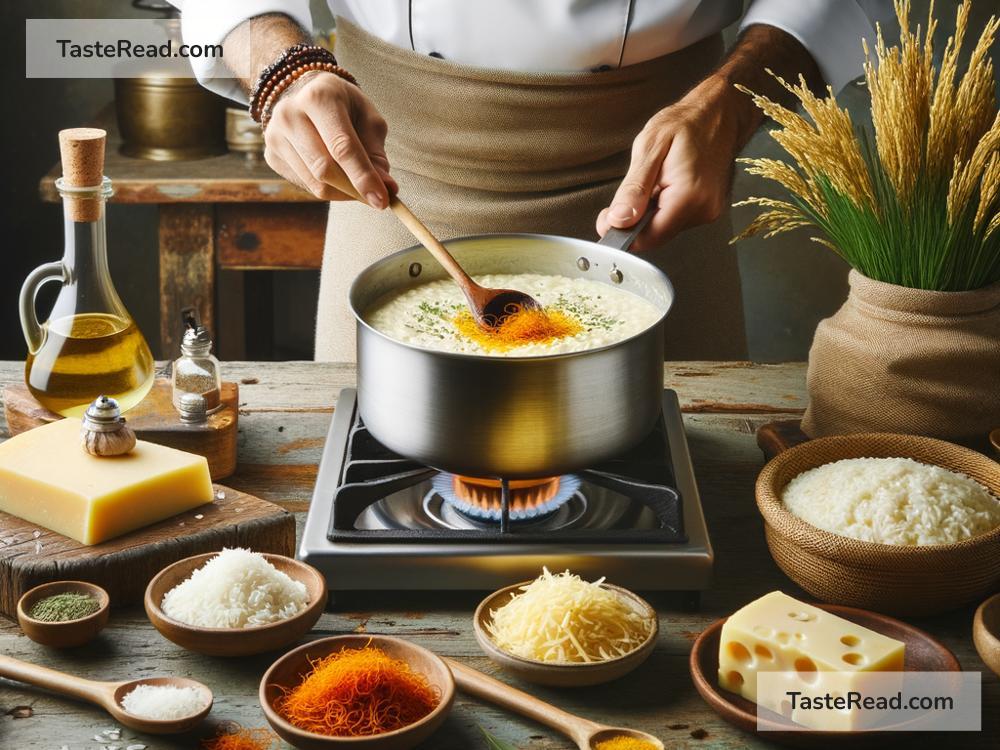The Origins of the Italian Risotto: A Tasty Tale
Italian cuisine is famous around the world for its flavors, fresh ingredients, and comfort food. And among its many treasures, risotto stands out as one of the most beloved dishes. This creamy and flavorful rice dish has become a symbol of Italy’s culinary excellence. But where did risotto come from? How did a seemingly simple bowl of rice turn into one of Italy’s most iconic meals? Let’s dive into the fascinating origins of Italian risotto and uncover its rich history.
It All Starts with Rice
Before risotto existed, rice needed to make its way to Italy. The story begins in the Middle Ages. Around the 13th century, Arab traders introduced rice to Europe, including the Mediterranean regions. They brought it to the lands they controlled, particularly Sicily, which lies off the southern coast of Italy. Sicily’s warm and humid climate turned out to be ideal for growing rice, and soon rice farming spread across Italy.
Rice grew steadily in popularity with local farmers because it was both nutritious and easy to cultivate in areas with an abundance of water. After rice production expanded, it became a staple ingredient in Italian kitchens, especially in the northern regions.
Why Northern Italy?
When we think of risotto today, we often associate it with northern Italy, especially regions like Lombardy and Piedmont. But why northern Italy? It’s largely because of geography and agriculture.
Northern Italy is home to the lush plains of the Po River Valley, which is full of fertile land and water. These conditions were perfect for growing rice on a large scale. By the 15th and 16th centuries, rice production thrived in the northern areas, making it widely available for cooking.
Additionally, northern Italy’s culture and traditions contributed to the development of risotto. Unlike southern Italy, which is known for pasta and olive oil, the north often celebrates rich, creamy dishes made with butter, cheese, and meat. These ingredients would later play an important role in the flavors of risotto.
The Birth of Risotto
Rice itself wasn’t always cooked the way we know it today as risotto; in the earliest days, it was often boiled or made into simple porridge-like dishes. But Italian cooks, known for their creativity, began experimenting with rice as a star ingredient. By the 16th century, recipes for rice cooked with broth and other ingredients started to appear.
One pivotal moment in risotto’s history occurred when chefs discovered a key technique: toasting the rice in butter or oil before slowly cooking it in broth. This process, known as “risottatura,” gave the rice a creamy, rich texture. It also allowed the rice to absorb all the flavors from the broth and seasonings, making risotto much more flavorful than simple boiled rice.
Risotto was seen as luxurious and special, often served to wealthy families and at grand banquets. As recipes evolved, cooks added ingredients such as cheese, saffron, mushrooms, and wine to make the dish even more remarkable.
Saffron: The Golden Ingredient
One of the most famous risotto recipes is risotto alla Milanese. This dish comes from Milan, a city in northern Italy, and it’s known for its bright yellow color, which comes from saffron.
The story of saffron in risotto begins in the late 16th century, when the spice was used as a dye for textiles. Legend has it that a young apprentice working on the Duomo di Milano (Milan’s cathedral) began experimenting with saffron as a possible food ingredient. At a wedding celebration, saffron was added to rice, creating the first-ever saffron risotto. People loved its golden color and bold flavor, and the recipe became a local favorite. Today, risotto alla Milanese remains one of Italy’s most recognizable dishes.
Risotto Goes Global
Over the centuries, risotto grew in popularity across all of Italy, each region adding its own touch. While Lombardy is famous for risotto alla Milanese, Venice has risotto al nero di seppia, made with squid ink, and Piedmont is known for risotto with truffles. Each variation uses local ingredients to highlight the flavors of the region.
By the 20th century, risotto crossed Italy’s borders and began appearing on the menus of restaurants around the globe. Chefs loved how versatile it was—risotto could be made with vegetables, seafood, meats, or even just a simple broth. Today, it’s celebrated worldwide, from cozy family dinners to elegant gourmet meals.
Why We Love Risotto
So why has risotto endured for so many generations? The answer is simple: it’s more than just food—it’s comfort, tradition, and creativity all in one bowl. Risotto allows cooks to be imaginative, choosing their favorite ingredients to make the dish their own.
Whether you’re eating risotto in a rustic Italian trattoria or creating it in your own kitchen, this dish connects us to centuries of history. It reminds us of Italian farmers growing rice in the Po River Valley, chefs experimenting with saffron, and families sitting together for a warm, hearty meal.
Conclusion
The story of the Italian risotto is a journey of culture, innovation, and tradition. From humble beginnings in the rice fields of northern Italy to becoming a global sensation, risotto has captured hearts and taste buds everywhere. The next time you enjoy a plate of creamy risotto, remember the history behind it—and savor the flavors of Italy. Bon appétit!


